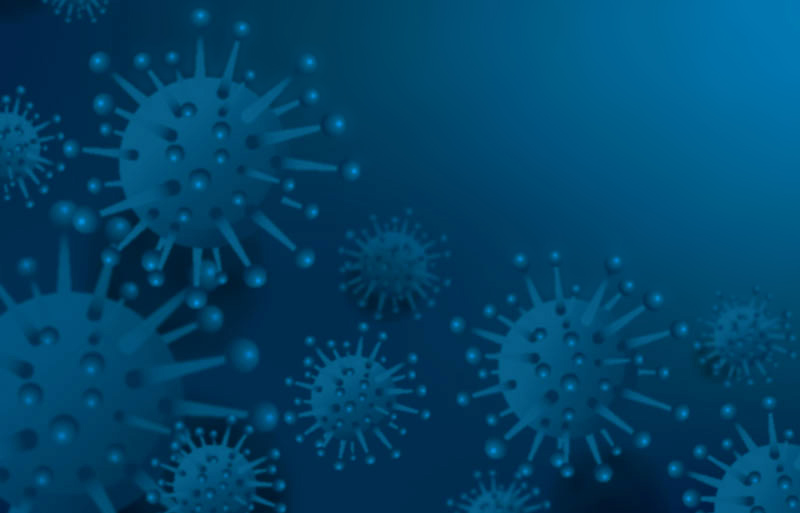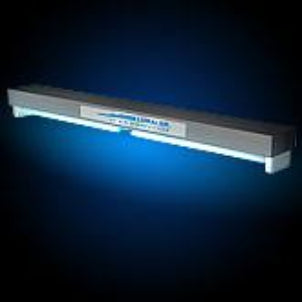Introducing the Perks of UV Disinfection: Making Certain Sanitized and tidy Spaces
While standard cleaning techniques have long been relied upon, developments in innovation have introduced an innovative solution that ensures tidy and disinfected rooms: UV sanitation. Furthermore, we will delve right into the safety and security factors to consider that need to be taken into account when executing UV disinfection. Prepare to uncover a brand-new measurement of tidiness and find the untapped possibility of UV disinfection.

The Science Behind UV Sanitation
UV sanitation is a clinically tested approach that utilizes ultraviolet light to eliminate dangerous microorganisms from surfaces and water. The science behind UV sanitation hinges on the ability of UV-C light to damage the DNA and RNA of bacteria, making them incapable to recreate and triggering their eventual fatality. UV-C light drops within the wavelength range of 200 to 280 nanometers, which is very effective in ruining microorganisms, infections, and various other pathogens.
When exposed to UV-C light, the genetic material of bacteria takes in the power from the light, bring about the development of thymine dimers. These dimers disrupt the normal replication and transcription processes of the microorganisms, inhibiting their ability to replicate and make it through (uv surface disinfection). The DNA and RNA damages triggered by UV-C light is deadly to the bacteria, making UV disinfection a efficient and trusted approach for eliminating a vast array of virus
UV sanitation is specifically valuable in settings where typical chemical anti-bacterials may be unwise or ineffective. It is a non-chemical technique that does not leave any type of residues or harmful byproducts, making it secure for use in food processing, medical care centers, water treatment plants, and various other sectors. UV sanitation is ecologically friendly, as it does not add to the advancement of antibiotic-resistant microorganisms or various other hazardous pollutants.
Efficiency of UV Disinfection on Virus
The efficiency of UV sanitation in getting rid of pathogens has actually been extensively researched and shown in countless scientific studies. UV radiation has the capability to inactivate a large range of microbes, including fungis, bacteria, and infections, by harming their DNA or RNA. This avoids them from reproducing and causing infections.
One research released in the American Journal of Infection Control discovered that UV disinfection was reliable in lowering the presence of numerous drug-resistant microorganisms in hospital spaces. Another research carried out by the National Institute for Occupational Safety and security and Health demonstrated that UV disinfection had the ability to eliminate 99.9% of the influenza virus on surface areas.
UV sanitation has likewise revealed assurance in combating the spread of healthcare-associated infections (HAIs) According to a study published in The Lancet, using UV-C light along with basic cleansing methods significantly decreased the occurrence of HAIs in a hospital setting.
Additionally, UV sanitation has actually confirmed to be efficient versus arising virus, such as the extreme intense respiratory syndrome coronavirus 2 (SARS-CoV-2), which causes COVID-19. A study conducted by the National Emerging Infectious Diseases Laboratories demonstrated that UV-C light can inactivate the virus on surfaces within secs.
Applications of UV Sanitation in Various Setups
With its tried and tested performance in removing virus, UV sanitation has actually discovered applications in a range of settings. One of the most usual locations where UV sanitation is used is in health care facilities. UV technology is used to disinfect person areas, running spaces, and other high-touch surfaces, lowering the threat of healthcare-associated infections. In enhancement, UV disinfection is additionally being applied in food handling plants and restaurants to guarantee the safety of food and protect against the spread of foodborne health problems. UV disinfection is also beneficial in water therapy plants, where it is utilized to kill harmful microbes and offer risk-free alcohol consumption water.
Another vital application of UV disinfection impends purification sector. UV air purifiers are made use of in domestic, commercial, and commercial settings to remove airborne germs, viruses, and mold spores. This modern technology is especially valuable in environments where individuals are more prone to respiratory infections, such as healthcare facilities, schools, and office complex.
Furthermore, UV sanitation is significantly being utilized in public transport systems, such as buses and trains, to preserve tidy and disinfected rooms for travelers. UV light is utilized to decontaminate surfaces and air inside the cars, minimizing the threat of spreading out infectious illness.
Benefits of UV Sanitation Over Typical Methods
In contrast to traditional techniques, UV sanitation supplies a variety of unique benefits that make it a preferable choice in different markets and setups. One substantial advantage is its effectiveness against a large variety of microbes, consisting of bacteria, fungi, and viruses. Unlike chemical anti-bacterials that might have restricted efficiency versus particular virus, UV sanitation is a non-selective procedure that can eliminate or suspend a broad range of hazardous organisms.
One more benefit of UV disinfection is its ability to provide quick and effective sanitation. Conventional sanitation methods usually call for longer call times or numerous steps to attain the wanted level of disinfection. In comparison, UV light can provide prompt and constant disinfection, lowering downtime and boosting efficiency in numerous applications.
UV sanitation likewise provides a safe and environmentally pleasant choice to standard disinfection approaches. uv surface disinfection. Unlike chemical representatives, UV light does not leave behind any unsafe deposits or by-products, making it ideal for usage in sensitive settings such as food processing facilities, medical care settings, and water therapy plants
Moreover, UV disinfection is a cost-efficient option over time. While the ahead of time investment for UV sanitation systems may be more than standard methods, the functional costs are commonly lower. UV lights have a long life-span and need marginal maintenance, causing decreased labor and substitute costs.
Security Considerations for UV Disinfection
Taking into consideration the prospective threats connected with UV sanitation, it is important to resolve the safety factors to consider entailed in executing this modern technology. UV official website disinfection uses ultraviolet light to eliminate or suspend microorganisms, making it an efficient technique for sanitizing various surface areas and objects. Nonetheless, it is very important to understand that UV radiation can likewise present risks to human health and wellness if correct security procedures are not complied with.
Firstly, straight exposure to UV radiation Learn More Here can trigger injury to the skin and eyes. Long term exposure can cause sunburn, skin damage, and even a raised risk of developing skin cancer. It is critical to make sure that UV disinfection systems are properly enclosed and outfitted with safety and security functions such as automated shut-off systems or movement sensing units to stop accidental exposure.

Furthermore, proper training and education are important for those in charge of running UV sanitation systems. They should know the potential risks, comprehend the security protocols, and understand how to deal with and preserve the tools properly.
Verdict
In verdict, UV disinfection uses many advantages in making sure clean and sterilized spaces. Its effectiveness in getting rid of virus has been verified via scientific study. UV disinfection can be applied in various settings, including medical care facilities, food processing plants, and water therapy systems. Compared to traditional techniques, UV sanitation has benefits visit this web-site such as faster sanitation times, minimal chemical usage, and no harmful byproducts. Safety factors to consider need to be taken right into account to stop possible dangers linked with UV exposure.
UV sanitation is a scientifically tested method that makes use of ultraviolet light to get rid of hazardous bacteria from surface areas and water. The DNA and RNA damages caused by UV-C light is deadly to the microbes, making UV sanitation a efficient and reputable method for eliminating a vast variety of virus.
An additional benefit of UV disinfection is its capability to provide effective and rapid disinfection. UV disinfection uses ultraviolet light to kill or suspend microorganisms, making it an effective method for sterilizing various surfaces and objects. Contrasted to traditional techniques, UV sanitation has advantages such as faster sanitation times, very little chemical use, and no unsafe byproducts.